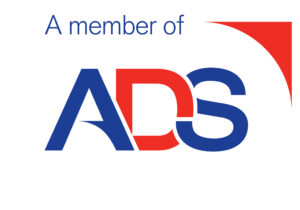Community Interest Companies (“CICs”) and charities are both legal structures used to set up social enterprises. This blog highlights the main differences between these structures, to outline which one is right for you.
Funding
Charity
The largest difference between a CIC and a charity is the source of funding. A charity is more likely to be dependent on grants, donations and fundraising for the majority of their income.
CIC
A CIC will typically not be dependent on donations and fundraising as it will have a mix of income from contracts and trade. This means the majority of the CICs sell products or provide services for profit and then reorient the money into the social enterprise.
A CIC may also receive grants, however, the trading income and contracts are the main sources of their income. CICs should only look at receiving grants in certain circumstances. This can include:
- When the grant is an exact fit with what they do;
- When they want to test, trial or innovate with a new product or idea (such as when starting the CIC). This aids in building the initial infrastructure for the product or services; or
- When developing additional areas of work to potentially turn in to products or services in the future.
There are some examples of CICs that rely on grants and charities that rely on trading income, but the above is the general rule. This means that charities tend to deliver time-limited projects that are funded by trusts and foundations, whereas CICs will have products and services they trade continuously regardless of the funding or grants they receive.
The board, staff and volunteers
Charity
In a charity, the directors (also called trustees), are expected to be volunteers. While it’s allowable for trustees to be paid while they’re working for the charity, The Charity Commission would prefer a completely independent, all-volunteer board of trustees. Therefore it can draw scrutiny if any member of the board is paid. Trustees can be reimbursed for things such as travel costs, but there are limits to the number of trustees who can be paid to work for the charity.
The founder of the charity will usually have to choose between working for the charity or being a trustee. It is often the case that the founder will step down from the board to be paid to work in the charity, and lose any control and involvement in decision making, or remain on the board and be unremunerated for the work they do in the charity.
A charity is expected to have a minimum of three, usually five, trustees.
CIC
With a CIC, since the overall structure is the same as a for-profit business, the board members can be paid.
Most often the Board of Directors will be people who work for the CIC. Founders can work for the CIC and be on the board so that they can maintain control of their creation. This means the founder of the CIC can maintain control of the CIC by being on the board and also can actively work in the CIC.
A CIC can have just one director, but it is wise to have at least three unrelated trustees on the board so that you can apply for grants and foundations.
benefit to the community
Charity
There are a very specific set of charitable purposes, or objects, that a charity can service. At the time that it is set up, the founders have to choose one or more of these purposes, or something very specific, to meet the requirements of the law.
The fulfilment requirements are very specific and restricted. If the object or purpose of the organisation is not covered by the specific guidelines in charity law, you might find yourself forced to establish a CIC.
Details about public benefit can be found here.
CIC
A CIC must specify a community it will benefit. This can be a group of people/things, a geographical area, people with certain characteristics such as young people, female-led businesses in the UK, areas of deforestation around the world etc.
Depending on the community benefit specified by the CIC, it may also be charitable but it does not have to be. The CIC Regulator will generally accept any community benefit and these are not defined in law.
to profit, or not to profit
Charity
With a charity, surplus (also called reserves) must not be excessive. In other words, even if they are reimbursed by the people participating, the charity cannot show any profit. This usually means that a charity must have a policy for how much surplus it retains in case its income falls in the future. Generally, charities hold surpluses of 6-12 months operational costs so they can continue to operate for that time period even if no new income is received. Any surplus above this level has to have specific uses, such as being held and designated for a new building.
CIC
A CIC is expected to turn a profit. There should be a surplus at the end of every reporting period that the CIC can show. The CIC is expected to put that surplus back into their core work, but they can also pay investors and owners.
Different types of charity and CIC
Charity
There are three main types of charity:
- Unincorporated charities – which have a constitution that details what the charity does and how it operates. This is usually for smaller charities because the trustees are personally liable if anything goes wrong.
- Incorporated charities (charitable companies) – this is when the charity is set up as a company with Companies House (usually as a limited by guarantee company although there are a very small number of limited by share charitable companies) and also registered with Charity Commission as a charity.
- Charitable Incorporated Organisations (CIOs) – are similar to a charitable company except they are only registered with the Charity Commission and not with Companies House as well. This reduces the dual registration and reporting that you have with a charitable company. This type of charity has to be registered with Charity Commission regardless of its income whereas the other two types must only register when their income is over £5,000. Below that level, they can register with HMRC as a charity to gain Gift Aid repayments.
CIC
There are two main types of CICs:
- Limited by share CICs – where there are shareholders and directors. Directors can receive up to 35% of the surpluses as dividends. Charities cannot pay out surpluses to the trustees.
- Limited by guarantee – and thereby does not have shares or shareholders, and cannot pay dividends. It just has directors. Both types of CICs have caps on the interest they can pay on performance-related loans.
With these two types of CICs, there are then several model articles which have slight variations such as who can receive dividends (individuals, organisations or both), if the directors are also the members or if there is a large membership. Further details of the model articles can be found at Community Interest Companies Constitutions.
governance and risk management
Charity
There are strict guidelines on governance of charities and risk management which the Charity Commission expects charities to comply with. With charities, because there is a separation between the board and the employee’s decision making is usually much slower.
CIC
CICs must manage their risks and have good governance in place as well, but they are generally a more flexible legal structure that enables risks to be taken and for the social enterprise to innovate more quickly as the directors are usually involved in the day to day operations as well as making decisions on the Boards.
Reporting requirements
Charities
Charities are required to produce financial statements in charity format. This includes reporting on their public benefit and achievement of their mission, as well as any payments made to trustees or individuals related to them. The Charity Commission regulates charities. If the charity is also set up as a company, they may also be regulated by Companies House.
CICS
CICs produce financial statements in a simpler company format and have to complete a short CIC report stating how they have benefitted the community they defined, how they have consulted with them and the amount of remuneration paid to the directors. CICs are regulated by Companies House and the CIC Regulator who checks compliance inline with CIC regulations. CICs also need to confirm the details Companies Households are correct annually via a confirmation statement.
Tax
Charity
Charities do not pay corporation tax. Charities are eligible for rate relief of 80% automatically and the additional 20% at the discretion of the local authority. Charities can claim gift aid on donations they receive which increases the value of the donation by 25%.
CIC
CICs are not automatically entitled to relief and it is up to the local authority whether they get any rate relief or not. CICs are not exempt from corporation tax and pay tax on their surpluses. CICs don’t receive gift aid, although through some crowdfunding and donation sites CICs can get gift aid.
Asset lock and conversion of legal structure
CIC & Charity
Charities and CIC’s have an asset lock in place, meaning if the Charity closes any remaining assets must be transferred to another charity or CIC. CICs can only convert to a charity and vice versa.
THINGS TO THINK ABOUT
If you are trying to decide which model may be right for you, we have listed some things to think about below.
- Do you want to be paid to run the social enterprise?
- Do you want to work for the social enterprise but remain on the board?
- Are you happy to fundraise and search for grants yearly?
- Is there a product or service you can commoditise and make money from?
- Are you happy to pay taxes on income received as a CIC?
If you enjoyed reading this post and would like to know more about our services, please contact us. We’re always happy to have a no-obligation chat, to see if we are the right law firm to help you.
Need advice?Contact us to discuss your requirements and how we can help







